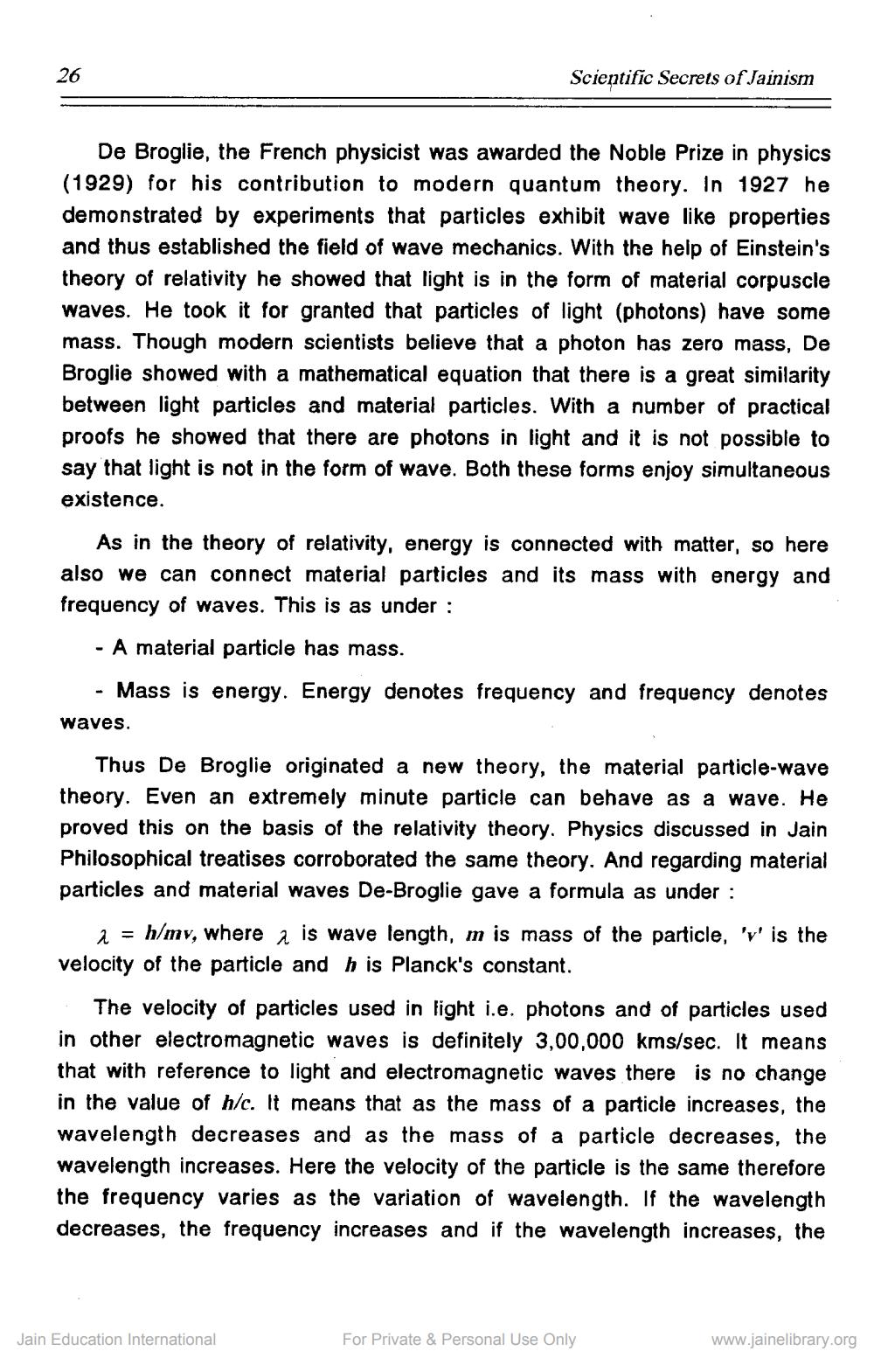________________
26
De Broglie, the French physicist was awarded the Noble Prize in physics (1929) for his contribution to modern quantum theory. In 1927 he demonstrated by experiments that particles exhibit wave like properties and thus established the field of wave mechanics. With the help of Einstein's theory of relativity he showed that light is in the form of material corpuscle waves. He took it for granted that particles of light (photons) have some mass. Though modern scientists believe that a photon has zero mass, De Broglie showed with a mathematical equation that there is a great similarity between light particles and material particles. With a number of practical proofs he showed that there are photons in light and it is not possible to say that light is not in the form of wave. Both these forms enjoy simultaneous existence.
Scientific Secrets of Jainism
As in the theory of relativity, energy is connected with matter, so here also we can connect material particles and its mass with energy and frequency of waves. This is as under :
- A material particle has mass.
Mass is energy. Energy denotes frequency and frequency denotes
waves.
Thus De Broglie originated a new theory, the material particle-wave theory. Even an extremely minute particle can behave as a wave. He proved this on the basis of the relativity theory. Physics discussed in Jain Philosophical treatises corroborated the same theory. And regarding material particles and material waves De-Broglie gave a formula as under :
λ = h/mv, where is wave length, m is mass of the particle, 'v' is the velocity of the particle and his Planck's constant.
The velocity of particles used in light i.e. photons and of particles used in other electromagnetic waves is definitely 3,00,000 kms/sec. It means that with reference to light and electromagnetic waves there is no change in the value of h/c. It means that as the mass of a particle increases, the wavelength decreases and as the mass of a particle decreases, the wavelength increases. Here the velocity of the particle is the same therefore the frequency varies as the variation of wavelength. If the wavelength decreases, the frequency increases and if the wavelength increases, the
Jain Education International
For Private & Personal Use Only
www.jainelibrary.org




